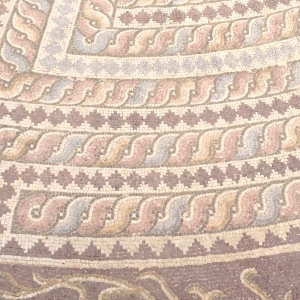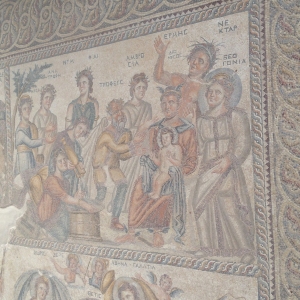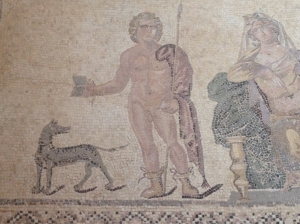I don’t know how I have arrived at mid May 2019 and have finally faced up to writing up day seven of my Cypriot trip. Maybe because for the highlight of the day, the Paphos mosaics, I took the poorest photos in the excitement of the visit.
But to complete to documentation of the study trip, I write this whilst on a train to Crewe heading to a mosaic project.
Packing up our bags, finishing up the kiln, having lunch consumed the early part of the day, then we headed towards Paphos, with a distraction here and a distraction there, which meant that we got to the Roman ruins about an hour before closing. So I legged it round.
But so glad I did. The area of Nea Paphos covers approx one kilometre square of ruins, once a prosperous town, likely to date back to approx 4th century bc reaching its height of wealth at the tail end of the 2nd century ad. So pretty old.
So giving you a snapshot of some of the mosaics (the best of my images):
The Theseus and the Minotaur mosaic is so impressive in its size and intricacies, with such a detailed frame, with chains, rows, guilloche and more.




Exploring The House of Aion, the mosaics were, to me, mind blowing. Intricate in design and details yet so large in size that they were hard to capture in a photograph, plus I was still zooming around at a pace of knots. The size of the individual stone tesserae are 2-5mm, and to give you an idea, the panel below measures 1.99 x 1.31 metres.
The floor was comprised of five panels, this one, represents the moment when Baby Dionysos is about to be handed over to Tropheus and the nymphs of Mount Nysa.


In the House of Dionysos there are 34 mosaics, and it is believed that the patron would choose the subject matter from copy books which would be created as a mosaic, yet the mosaicists were not always familiar with the subjects represented, so there are some errors.
Below is a section representing the tragic story of Phaedra and Hippolytos. I love that he is about to go hunting only wearing his boots and a shawl.

I came away with the official Guide to the Paphos Mosaics which has way better pics than mine, and all the stories that explain the mosaics. I wish I had it before I went and that I had the whole day to self-indulge.
Then after a cooling down drink and a wander about the harbour, we headed to visit the Lempa Wall. At dusk, so images are even worse:
Created by the Cypriot artist Stass Paraskos in 2002, it is made of discarded materials, including a toilet, oil cans, mosaic, bike parts etc. I just love anything this eclectic, whilst technically not that accomplished in terms of mosaic, there is such joy in it.



So all-in-all, I had a brilliant week, and I learned so much, had so many inspirational moments and loved the enthusiasm of Martin and the other participants.
Thanks to Martin of Grampus Heritage, The community of Kato Drys, the Arch Network and Eurasmus Plus funding.
